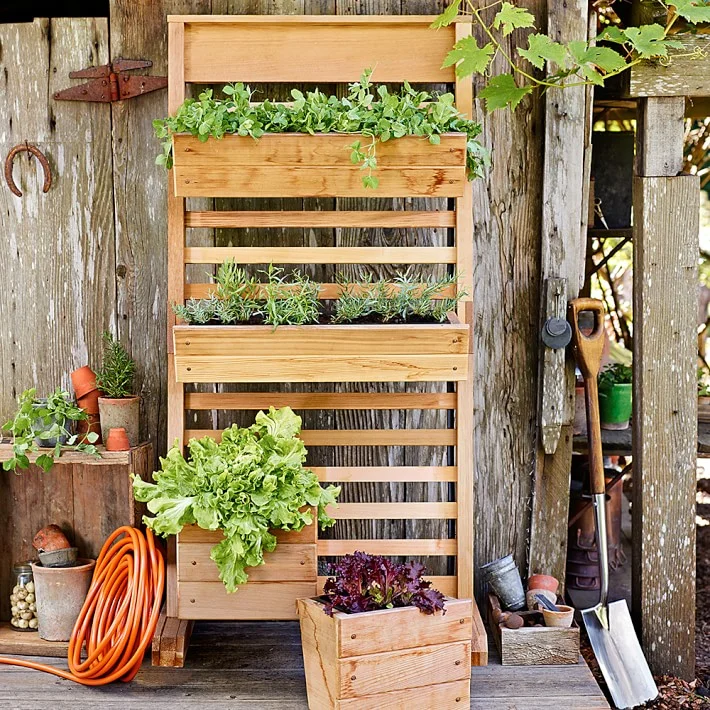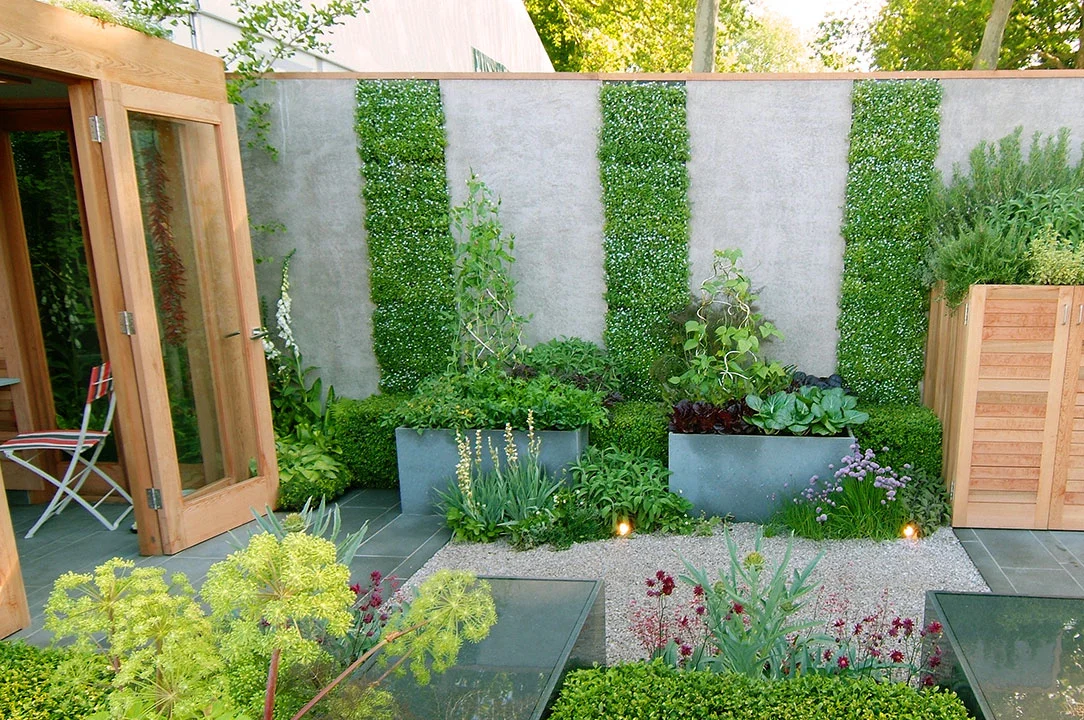What is Vertical Gardening?
We typically think of growing a plant along a horizontal plane -- a backyard suburban vegetable bed or NYC townhouse garden. But in short, we can define vertical gardening as growing a plant along a vertical axis.
Consider the gateway to your garden design — which is your garden entrance. With a little creativity, the transition into your garden could be a beautiful vertical garden. An attractive entrance wall, gate, arbor or pergola can be used as the structure upon which plants can grow. This adds character and can become a real focal point. That is vertical gardening!
Maximize the Design of your Vegetable Garden
For homeowners with limited space the idea of vertical gardening creates an opportunity to grow more plants, therefore more produce using the functionality of vertical gardening techniques. There are plenty of advantages to growing up, such as making pest control and monitoring easier because the critters are right in front of your face. Harvesting is made easier on your body because there's no stooping or hunching over. Harvest waste also becomes a thing of the past, because ripe fruit is no longer hidden under lush growth.
Great Climbers for Your Vegetable Garden
A list of vegetables that grow on arbors and trellises would include the following:
- Beans, peas and cherry tomatoes can all be trained on a vertical structure such as a tutor or teepee
- Try scarlet runner beans for their beautiful flowers as well as the beans
- Speaking of beans...Pole beans, english cucumbers, sugar snap peas.
- Small pumpkins, vining summer squash or winter squash work well
- Annual vines such as morning glory, moonflower, black-eyed susan vine are easy accompaniments to the veggies.
How Permanent Should your Vertical Structure be?
This depends on whether or not you own the property and your future plans for it. This also depends upon whether there are local ordinances, restrictions, codes. Generally you should choose lightweight materials that are easily removed if this is semi-permanent. On a terrace or roof garden consider the wind resistance factor; the structure should be very secure.
How Much Sun Does a Vertical Garden Need?
Understand the direction the wall faces. Based upon that you will have a better understanding of the amount of light the site offers. Remember a south-facing wall receives full sun, while a north facing wall mostly shade. Consider the possibility of a microclimate - vertical gardens are less vulnerable to frost, but may be more vulnerable to wind. Remember the gardener’s timeless axiom — “Right plant, right place.”
Best Plants for Vertical Gardens
Choose your plants wisely. Many of the best plants for vertical gardens are those that are suitable for growing in dense clusters, that tolerate a bit of shade (from plants above it) and periodic drying. Many plants need to have airflow around them to mitigate fungal diseases.
Keep that in mind as the vertical wall becomes a lush verdant wall, that it may be time to do a bit of thinning. Vines and creepers work extremely well but pay attention to species that are successful because of their aggressiveness. (Quick growth and coverage.) These typically need to be pruned often and regularly to control them.
How Plants Attach Themselves to Supports
Vines climb and support themselves by using either twining stems, tendrils, aerial roots or adhesive disks sometimes called hold fasts.
Vines that twine will physically wrap their stems around supports. In this case, poles, chain-link fence, wire, trellises or arbors provide the best support. Wisteria, trumpet vine, and honeysuckle are examples.
- Vines with tendrils use leafless stems which wrap around supports. Thin poles or light lattice (3/4 inch or less in diameter), wire, twine or chain-link fence are suggested supports. Grape is a classic vine with tendrils.
- Another vine that prefers wire, chain-link fence or small thin lattice is clematis. This vine uses its petioles (the short stem that attached the leaf to the plant) to wrap around the support.
- Vines with aerial roots such as Climbing hydrangea use small root-like structures that grow out from the sides of the stems to support themselves. These root-like structures can twine around large openings in a trellis or they attach best to rough textured surfaces such as masonry, very rough textured wood and bark.
- Vines with hold-fasts use a small disk like adhesive pads to attach themselves to most any smooth surface. Boston ivy and Virginia creeper are examples. These can damage painted surfaces or remove a textured finish over time as their hold-fasts rigidly attach themselves. They require a vigilant eye to maintain if you are concerned about this issue.
Best Use of Vertical Structures for Attachment
The best way to set up a wall garden or vertical garden is to fix the pots or frames to a wall or fence. If you can’t, or don't want to drill into a wall or fence, the pots can be attached to chains dangling down the walls. You can also hang the planters from hooks or install frames to support the garden. Then design the plant. Plants are phototropic. They grow directly to the sun, which means your vine wants to grow to the open sky. If you want the entire wall covered, try to take the first leaders and affix them horizontally. The vine will then make a 90-degree turn and direct itself to the sun.
Living Wall Planters
Think carefully about the height and strength of the structure. Make sure that the wall and fence and the attachment points are strong and solid. They have to support the garden at all stages of its development. Remember that the vegetation will get heavier and heavier as the garden develops. For an on-structure garden (urban roof garden or city terrace garden) pay attention to the weight loads. Planters are already of considerable weight when soil is saturated after heavy rain showers. Research availability of a lightweight growing medium for roof garden planters.
Vertical wall systems created out of recycled plastic fiber felt is a wonderful technology for growing tomatoes and veggies in a condensed area.
Most Important Garden Maintenance Tip for Vertical Gardens
Be well aware of the maximum height the plants are likely to grow to when mature. This will affect the kind of structure you choose and will also affect accessibility for pruning, watering, fertilizing and various maintenance tasks. Consider how high you can comfortably reach! Also consider how you are going to trim, prune and maintain the plants as they grow. The art of garden design is four dimensional - in time everything grows.








